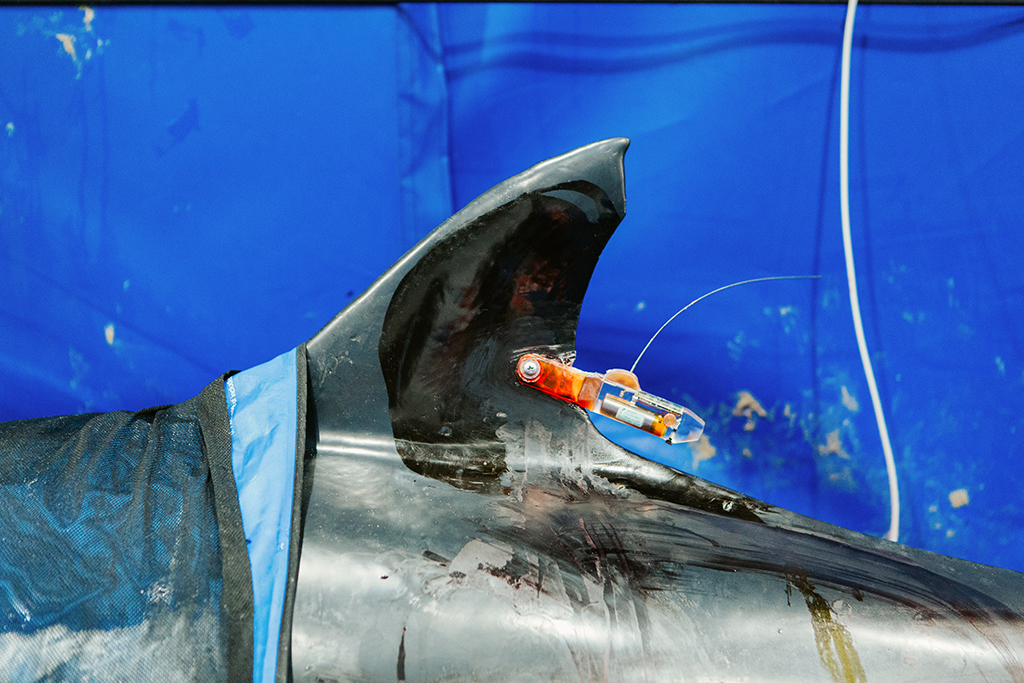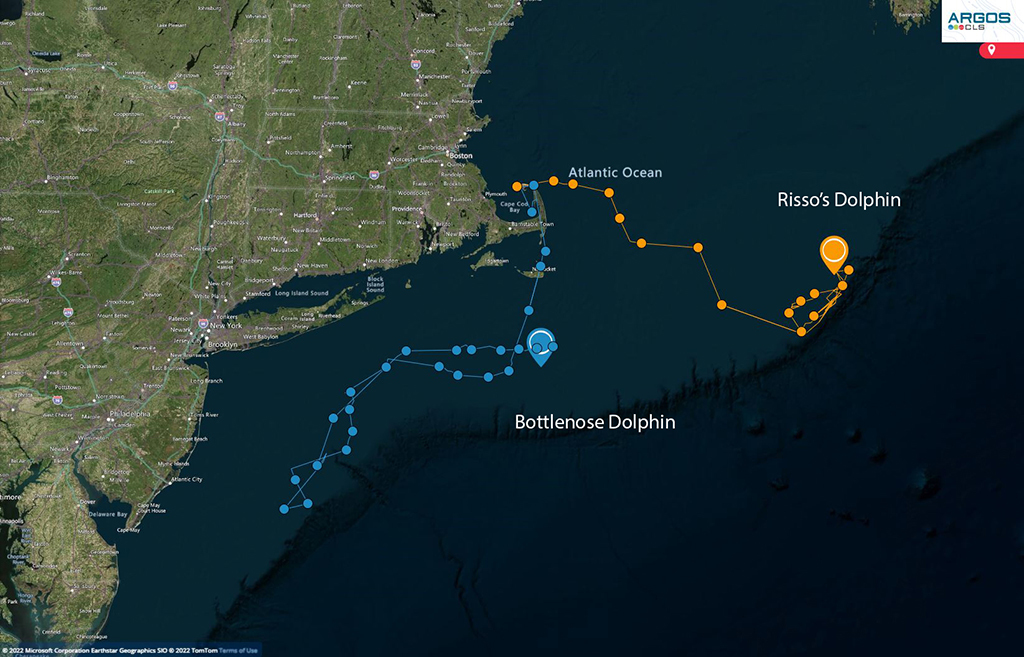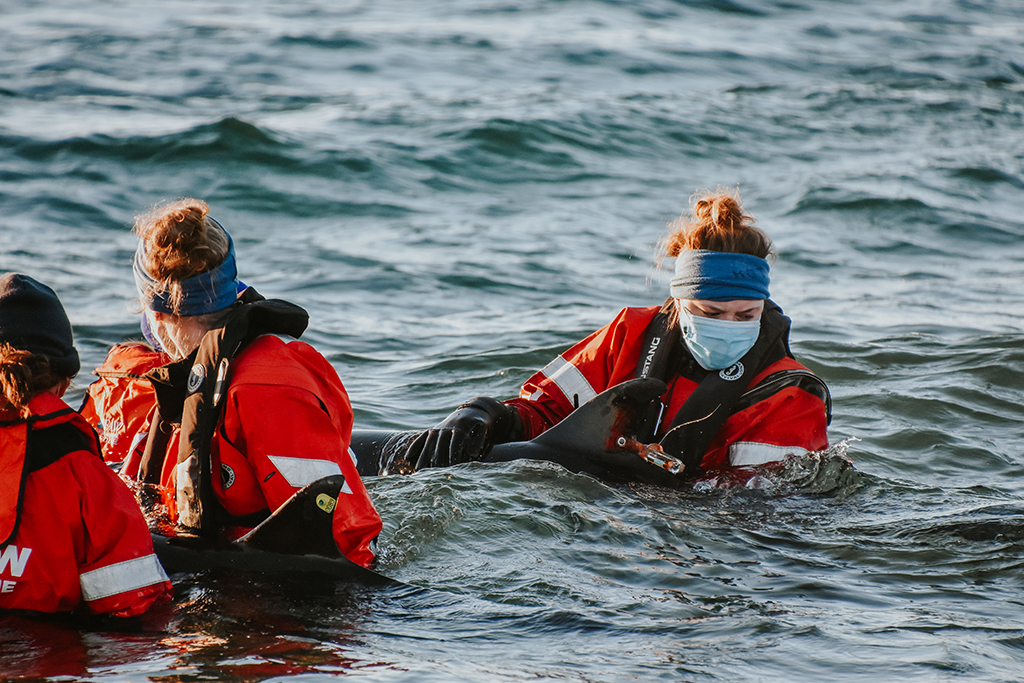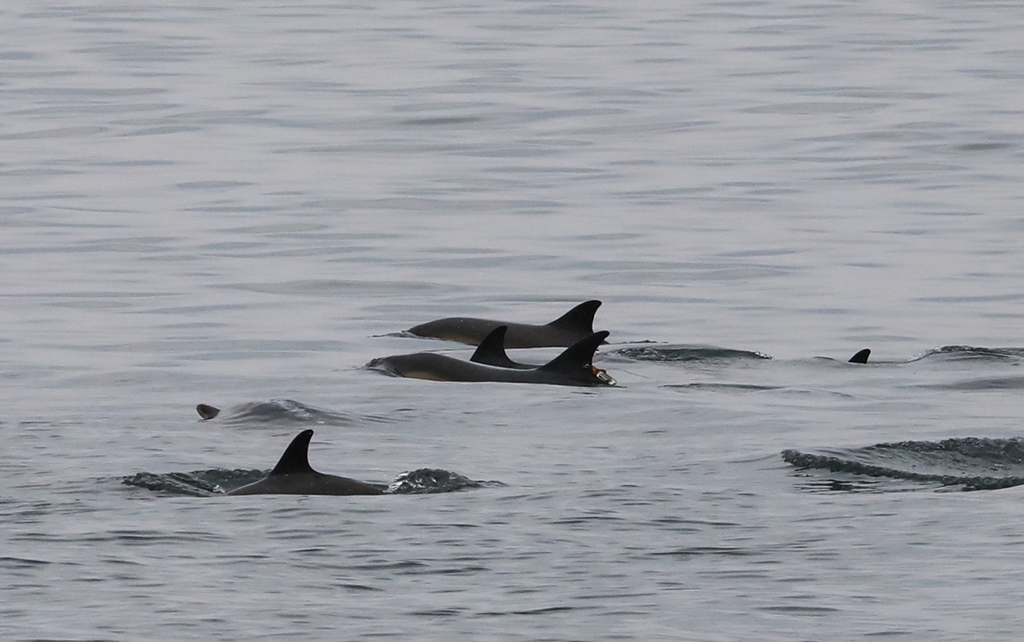Stranded Marine Mammal Rescue - Global
When the tide is low, the stakes are high for marine mammalsfacts about satellite tagging dolphins and whales
facts about satellite tagging dolphins and whales

With roughly 700 hundred miles (1,100 km) of gently sloping beaches and large tidal fluxes, the hooked shape of Cape Cod’s coastline sees more frequent live strandings of cetaceans (whales, dolphins, and porpoises) than any other location in the world.
Over the past 23 years, IFAW’s Marine Mammal Rescue & Research team has come to the aid of hundreds of dolphins and porpoises—rescuing, treating and releasing more than 70% of viable candidates back into the wild. Using small, temporary satellite tags and post-release monitoring (PRM), we’ve been able to prove that rescued and released animals are not only surviving, but thriving!
Satellite tags and the process involved might spark questions: Why do we tag, how does it affect the animal, and what are we hoping to learn? Follow along as we dive into some frequently asked questions about satellite tagging.

What is a satellite tag?
A satellite tag is a small transmitter that attaches to an animal and sends data to a satellite system in orbit above the Earth’s surface. When a tagged dolphin or whale’s fin breaks the ocean’s surface as it rises for a breath, satellites pick up the data transmitted from the tag. Researchers then use these signals to determine the animal’s location, how fast they are traveling, and more.
Why satellite tag?
IFAW’s satellite tagging program began in 2010 to help determine long-term survival of stranded, rescued and released dolphins. Researchers long thought that dolphins that stranded alone—even if they were healthy—had no chance of surviving release without a pod due to their highly social nature. At the time, they thought these animals should be humanely euthanised. With the use of satellite tagging technology, IFAW has been able to push the boundaries of marine mammal rescue and prove that healthy, single-stranded dolphins can be released and are able to integrate into a pod and survive!
How is the satellite tag attached?
Satellite tagging is a minimally-invasive procedure that only takes a few minutes. First, we thoroughly clean and numb the dolphin’s dorsal fin (much like a human would receive Novocain before dental treatments). Our team attaches a tag to the trailing edge of the fin, which is made of connective tissue similar to the human ear. By placing the tag here, we reduce “drag” as the dolphin swims through the water. The dolphins show no signs of discomfort from the tagging procedure.
Does a satellite tag hurt the animal?
The actual tagging procedure is no more stressful to the animal than what it is already experiencing in a stranding event. With the added benefit of a numbing agent, tagging can be compared to an ear piercing in humans. We use temporary tags that are light, compact, and hydrodynamic. This allows the animal to swim and interact with other dolphins normally without interference from the tag. Once the tag detaches (more below), a small, healed scar is left on the dorsal fin.

How long does a satellite tag work and how long does it stay on?
The length of the tag’s transmission varies, depending on the tag’s battery life and how it is programmed. Most tags transmit for a few weeks to a few months—long enough to provide us with data on the dolphin’s progress after its release. The tag detaches intentionally, once its metal fasteners begin to corrode in salt water. The longest transmission time from one of our tags is 160 days!
What data do satellite tags collect?
Temporary satellite tags are vital tools that allow us to monitor animals after they are released. The path of the tag provides information back to our experts, such as swim speed, which can give indications of how well the animal is faring. They can also monitor whether they are returning to habitat that is appropriate for their species. More broadly, they tell us if the animal has survived or stranded again.

Do we satellite tag every animal that we rescue?
No. Multiple factors go into our decision to satellite tag a stranded cetacean (whale, dolphin, or porpoise). These include social, health and environmental concerns. We place tags on animals that warrant additional follow-up to help ensure that we are making the best decisions for each animal. Often, this means we are tagging and tracking the weakest of the animals in a particular pod. To date, we’ve tagged and released 147 cetaceans of several different species—including short-beaked common dolphins, Atlantic white-sided dolphins, bottlenose dolphins, striped dolphins, Risso’s dolphins, pilot whales, harbor porpoises, and even a minke whale!
How much does a satellite tag cost?
One satellite tag alone costs USD $1,700. Add in the satellite service fees of approximately $400, plus the additional tools and supplies needed, and the cost per dolphin is roughly $2,400.

Do we tag animals around the world?
Cape Cod is a global hotspot for the live stranding of dolphins and other cetaceans. We use our presence on the Cape and our team’s expertise to share data and best practices with other rescuers around the world. It’s through our long-term commitment and drive toward innovative solutions that IFAW’s stranding successes are having a global impact.
The Dutch government, for instance, contacted our team to confer about post-release monitoring of harbor porpoises, in order to monitor the effects of offshore wind development on the porpoise population. IFAW is currently drawing on two decades of experience to help reduce the impact of this new industry on this porpoise population.
In New Zealand we have worked with partners at Massey University, Project Jonah and the Federal Department of Conservation to incorporate post-release monitoring, allowing the greatest gains in knowledge from stranding events. IFAW has supplied tags and trainings in New Zealand and beyond.
Related content
Our work can’t get done without you. Please give what you can to help animals thrive.